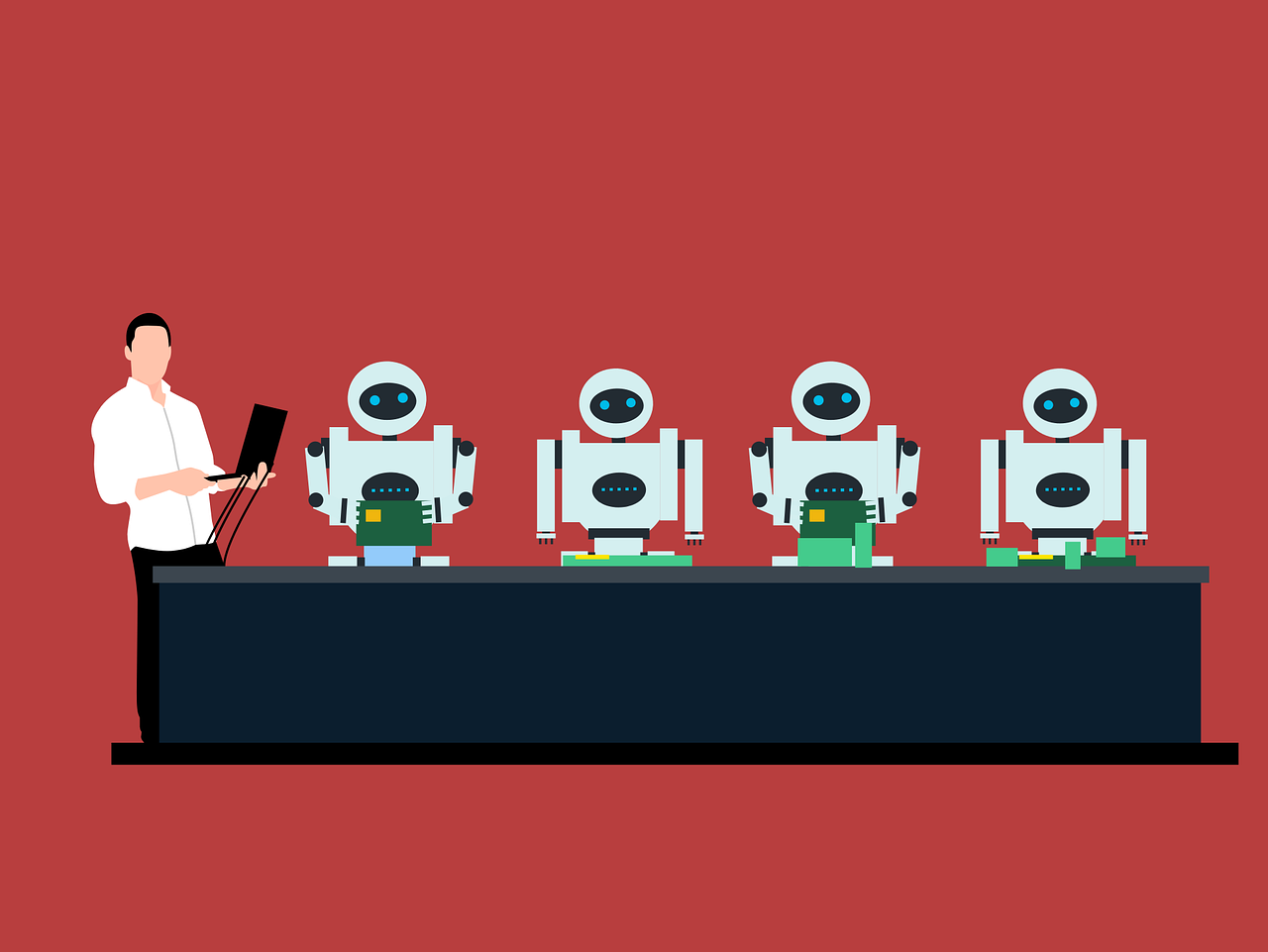Numerous robot technologies are poised to transform industries and everyday lives. Collaborative robots allow agile manufacturing while healthcare robots like surgical arms improve patient outcomes and recovery times. Logistics and transportation become easier thanks to autonomous vehicles and warehouse automation; while agriculture reaps the rewards from robotic systems that reduce labor-intensive tasks.
Swarm Robotics
Robots can be expensive to design, build, and maintain; their designs often include complex structures with many parts. One broken part can render an entire system unusable. Swarm robotics provides a solution by breaking tasks down into smaller groups of simpler robots that work together toward accomplishing a single goal. At the Georgia Robotics and Intelligent Systems Lab we focus on these systems, which draw inspiration from nature – for instance insects swarming together or flocks of birds flocking together; our teams of small robots can be programmed to complete missions such as navigation, obstacle avoidance and search-and-rescue operations.
Swarm robotics’ primary advantage lies in its use of individual robots sharing sensors and actuators for greater redundancy, making the system more fault tolerant and scalable than single-robot systems. Furthermore, intelligence for this approach can be built into simple robots instead of complex control systems.
Swarm robotic systems typically rely on local perception and communication to achieve emergent group behaviors, with sensors and actuators connecting between themselves to coordinate activities and a central command station accepting high-level commands to manage them (Dorigo et al., 2021).
Swarm robotics applications depend on adaptable robots to respond quickly to changing environments, whether that means dealing with debris or flooding or simply adapting when one robot leaves their group through dynamically redistribution of tasks or alteration of task objectives. When deployed for search-and-rescue missions, robots must adapt instantly if environmental conditions change like debris or flooding; additionally they should also be capable of accommodating losses without hindering performance, for instance by dynamically redistribution tasks or changing objectives when dealing with any robot loss without degraded overall performance resulting from such an event.
Soft Robotics
Soft robots employ flexible and stretchable electronics devices that perform actuation and sensing functions. This field of robotics draws upon advances in materials science, mechanical engineering, biomechanics, polymer chemistry and computer science to design robots which bend, twist, crawl or change shape as needed.
Engineers aim to mimic biological organisms by designing robots that respond physiologically, behaviorally and morphologically to their environment. Engineers have designed amphibious turtle-inspired robots which adapt by switching between swimming flippers and load-bearing legs depending on their surroundings; such adaptability enables robots to complete tasks they would have otherwise struggled to complete otherwise.
Researchers are investigating ways to strengthen flexible robots with light as an alternate source of control, sensing, and power rather than traditional wires and circuits. One prototype utilizes light to steer a flexible robot through constrained environments – similar to how vines bend around obstacles in nature – while other projects use light activate an artificial skin covering the robot that triggers motors or sensors when stimuli such as heat or sound are detected.
Sensors used in flexible robots are also flexible, making it possible to utilize various sensing mechanisms. These could include resistive, capacitive, triboelectric piezoelectric or thermal sensors which measure parameters such as position, force or temperature. By employing advanced materials and machine learning capabilities these sensors are capable of understanding and responding appropriately in different conditions.
Improved Sensors
Robot sensors are essential to their functionality, providing real-time information that enables robots to respond appropriately to their surroundings. From tracking equipment and supplies to avoiding obstacles, successful robots rely on reliable sensors in order to be effective.
Robotics technology is revolutionizing sensors, making them more precise and allowing them to better communicate between each other. For example, optical sensors use light to track movement while electrical ones rely on changes in resistance or capacitance; optical sensors tend to be more precise due to being unaffected by noise. Another breakthrough in sensor technology are event-based sensors which only transmit data when they detect changes compared with continuous transmission of information – saving power in comparison.
Service robots rely on sensors such as robotic environmental mapping cameras, lidars and odometry for navigation and job performance. This equipment allows them to make maps of their environments while remaining at ease; obstacle avoidance sensors like infrared or ultrasonic sensors help locate objects while dodging obstacles.
Robots need sensors to sense pressure or vibrations. Force and tactile sensors enable them to regulate how much pressure is being applied so as to avoid damage or ensure quality; force sensors in particular allow robots assembling delicate electronics components to apply just the right amount of force without breaking anything, while temperature changes sensors help detect when overheating occurs.
Cobots
Cobots represent the future of robotics technology thanks to their adaptable nature and integration into wider processes. While traditional robots may only be designed for specific work environments, cobots can adapt quickly by sensing their surroundings with sensors and cameras and using artificial intelligence algorithms to make real-time judgment calls in response to changing conditions.
Cobots are also designed to safely interact with humans without needing barriers or safety systems to protect themselves. If they come into contact with someone, they can immediately stop and resume once the area is clear; plus their design features rounded corners without sharp edges to prevent injury. Furthermore, these intelligent machines perform precise duties that improve quality while increasing productivity in manufacturing industries.
Cobots can be easily programmed and tailored quickly to the unique requirements of your business, providing flexibility that allows SMEs to deploy them for demand spikes or workflow changes while maintaining efficiency levels.
Cobots are often more affordable than their industrial robot counterparts, offering easy programming and low capital costs that make them the perfect solution for small and mid-sized businesses looking to improve their workflow and increase profitability. Human workers can focus their skills and talent elsewhere while cobots provide staffing solutions in highly specialized areas like medical or precision inspection tasks.
